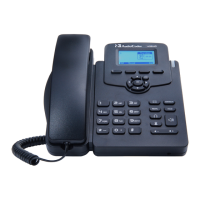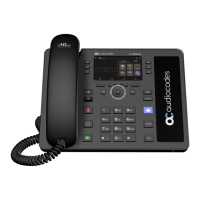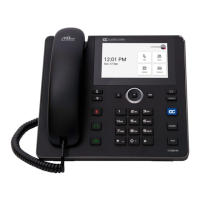400HD Series IP Phones
Administrator's Manual 116 Document #: LTRT-11950
Parameter Description
100: Auto-attendant default extension
101: Voicemail default extension
011xxx.: International rule without prefix
9011xxx.: International rule with prefix
1[2-9]xxxxxxxxx: LD rule without prefix
91[2-9]xxxxxxxxx: LD rule with prefix
9[2-9]xxxxxx: Local call with prefix
*xx: 2-digit star codes
[1-7]xx: A regular 3 digit extension that does not start
with 9 or 8 is dialed immediately
[2-7]xx: A regular 3 digit extension that does not start
with 9 or 8 or 1 is dialed immediately
[2-7]xxx: A regular 4 digit extension that does not
start with 9 or 8 or 1 is dialed immediately
[8]xxx: A 3 digit extension prefixed with an 8 (routes
calls directly to voicemail of extension xxx)
[8]xxxx: A 4 digit extension prefixed with an 8 (routes
calls directly to voicemail of extension xxxx)
T: Refers to the Dialing Timeout.
Using ';' separator: An 'x' in the pattern indicates any
digit. ';' separates between patterns.
For example: '10x;05xxxxxxxx;4xxx'.
In this example, three patterns are defined. A number that
starts with 10 is terminated after the third digit, and so on. If
the user dials a number that does not match any pattern,
the number is terminated using the timeout or when the
user presses the pound ('#') key.
Dial Plan
voip/signalling/sip/number_rules
This parameter works in conjunction with the parameter
voip/signalling/sip/digit_map and enables translation of
specific patterns to specific SIP destination addresses.
An 'x' represents any dialed digit. Each backslash at the right
side of the '=' represents one of the dialed digits. Rules are
separated by the character ';'.
The valid value can be up to 256 characters.
For example: '4xxx=Line_\\\@10.1.2.3'
This rule issues a call to 10.1.2.3 with the SIP ID of Line_
followed by the last three digits of the dialed number.

